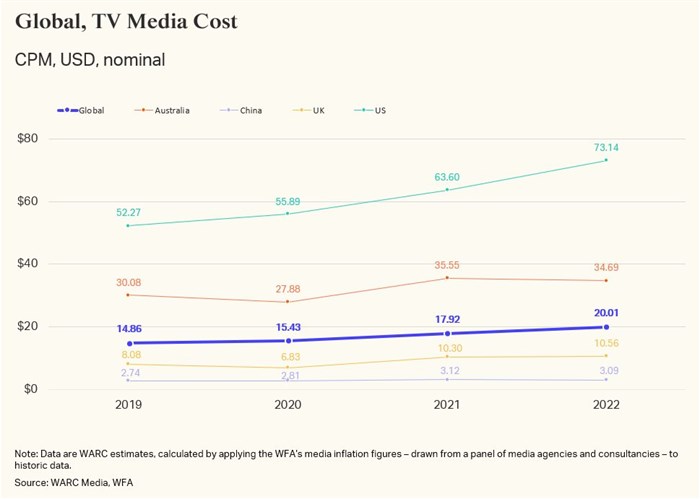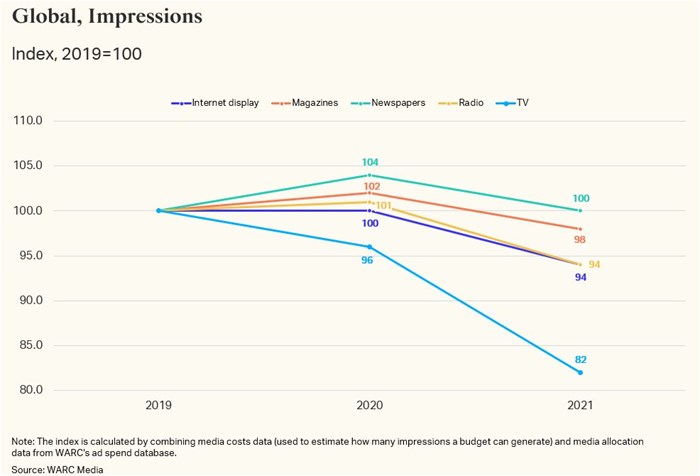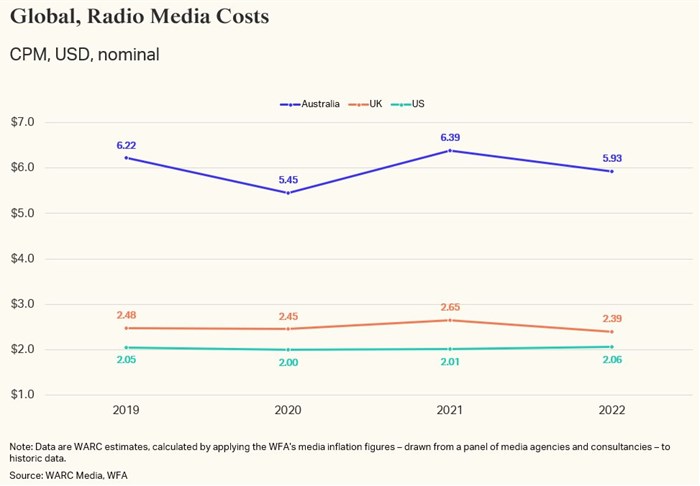Top stories


Marketing & MediaHow Spar is using localised marketing to redefine the urban retail experience
Karabo Ledwaba 1 day




More news




ESG & Sustainability
How South Africa’s conservation efforts can thrive with Indian partnership










Globally, TV CPMs (cost per thousand) have increased 31.2% since 2019 – the steepest incline in more than two decades – and are up 9.9% year-on-year in 2022, according to Warc Media. The trend is especially pronounced in the US, where TV CPMs are forecast to reach $73.14 in 2022, an increase of 40.0% on pre-Covid costs.

For some categories, the impact is heightened. According to Warc Media data, advertisers in the food category spent on average 79.8% of their budgets on TV in 2019, and in the automotive category, 67.7%. If they were to have maintained that same level of investment, by 2021 the volume of impressions would have decreased by 18 percentage points.
This twin trend of declining linear television viewership and rising TV media costs is encouraging advertisers to look elsewhere for incremental reach i.e. unique audiences delivered by additional channels (often online) on top of the audience reached by a brand’s primary mass media activity (often TV).

However, price pressure is being felt across the online media landscape. Paid social CPMs increased by 33% between 2019 and 2021 and the growing popularity of retail media formats is pushing up the cost of advertising on platforms like Amazon.
Channels such as broadcaster video-on-demand (Bvod) provide an alternative source of incremental reach. However, over-the-top (OTT or streamed video) ad costs are rising too: inflation in advanced TV formats in the US is forecast to reach 9.9% in 2022, as per World Federation of Advertisers (WFA) figures.
The pursuit of incremental reach has generally focused on digital audio-visual channels, as they offer a more straightforward transition from television. In comparison, offline channels are often under-utilised, despite not having witnessed the same levels of price inflation since 2019.
In Australia, the cost of radio media in 2022 remains 1.1% below pre-pandemic levels, while prices in the US are largely unchanged three years on.

A similar picture emerges in out-of-home (OOH), incorporating both static and digital panels: in the UK, outdoor ad prices are 3.1% lower than before COVID-19, while, in the US, OOH remains 5.8% cheaper than it was in 2019.
Alex Brownsell, head of content, Warc Media, and author of the report, says, “As linear TV’s share of total media consumption declines, particularly among younger audiences, brands are looking elsewhere for incremental reach. However, the efficiency of delivering reach via non-TV channels is being threatened by inflation across the media ecosystem.
Download a complimentary sample report of Warc Global Ad Trends: The rising cost of incremental reach here.